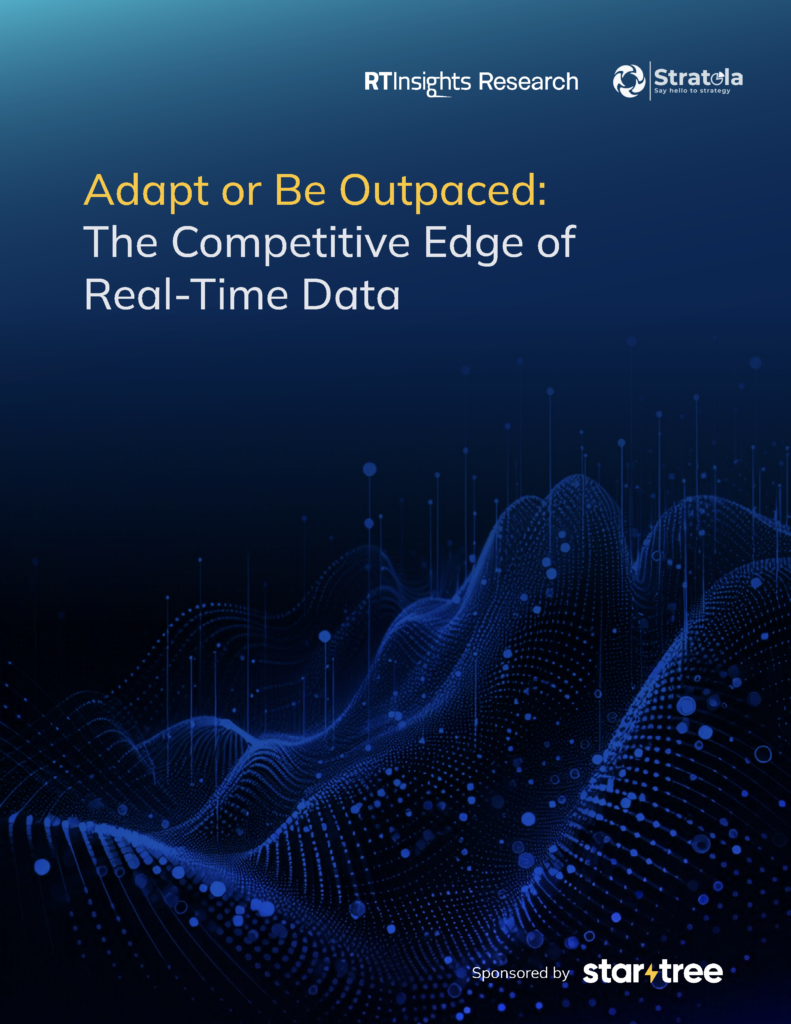Online Analytical Processing (OLAP) is a category of database systems designed to support complex queries and multidimensional analysis. OLAP systems allow businesses to analyze large volumes of data quickly, making it easier to uncover trends, forecast outcomes, and make informed decisions.
OLAP systems and traditional data lakehouse architectures support distinct query patterns. OLAP systems are optimized for fast, interactive queries—ideal for agile, exploratory analytics where users need to quickly slice and dice data across multiple dimensions. In contrast, data lakehouses are designed for complex, large-scale analytical queries that process vast amounts of historical data. These queries often involve deep joins and transformations, resulting in longer processing times but providing rich insights for comprehensive, in-depth analysis.
Traditionally, OLAP systems delivered performance at the expense of data freshness, flexibility, and cost-efficiency; which is no longer the case and why OLAP has experienced a renaissance. Let’s explore how OLAP works, its key features, and how it has evolved.
Key Features of OLAP
OLAP systems are known for enabling multidimensional analysis, allowing users to examine data across various perspectives (such as time, geography, and product categories). Here are some defining features:
Multidimensional Data Models
OLAP organizes data into multidimensional structures (often called “OLAP cubes”), where each dimension represents a different aspect of the data. For example, a retailer might analyze sales data by time (daily, monthly), location (store, region), and product category.
Data Aggregation
OLAP systems aggregate data at various levels, enabling users to quickly view high-level summaries and then drill down into detailed data points. This flexibility supports insightful analysis across business functions.
Fast Query Performance
OLAP systems are optimized for read-heavy operations, supporting complex queries that can involve joins, aggregations, and calculations across large datasets. Query responses are designed to be fast, even when handling big data. One question begets another.
Advanced Calculations
OLAP supports complex calculations such as forecasting, statistical analysis, and trend modeling. These advanced capabilities make it a powerful tool for data scientists, analysts, and business intelligence teams.
The Evolution of OLAP: From Trade-Offs to Real-Time Analytics
While OLAP has long been essential for analytical workloads, traditional OLAP systems were built around certain compromises. Businesses could get fast query performance, but it often came with limitations.
Old OLAP: Performance with Compromises
- Pre-Aggregations for Speed: Traditional OLAP systems relied heavily on pre-aggregated data to achieve fast performance. However, this approach made the data less flexible and often stale, as updates required reprocessing.
- Limited Drill-Down Capabilities: Analysts were restricted to predefined aggregations. Exploring data outside of these boundaries required recomputations that were time-consuming and expensive.
- High Compute and Storage Costs: Pre-aggregations resulted in redundant data storage, inflating costs. Additionally, reprocessing data for new analyses drove up compute expenses.
- Latency and Concurrency Issues: As datasets and user demands grew, traditional OLAP systems struggled to deliver fast responses and support large numbers of simultaneous users.
Old vs. New OLAP: What’s Changed?
| Traditional OLAP (Old) | Modern OLAP (New) | |
|---|---|---|
| Data Freshness | Batch processing with delayed updates. | Real-time data ingestion and availability. |
| Query Flexibility | Limited to predefined aggregations. | Dynamic, on-demand drill-down and exploration. |
| Performance Approach | Heavy pre-aggregation for speed. | Materialized views and partial aggregations for flexible speed. |
| Compute & Storage | High due to redundant pre-aggregations. | Optimized with local indexes and low-cost tiered storage. |
| Scalability | Expensive and complex to scale. | Seamless, cost-efficient scaling at petabyte scale. |
| Query Latency | Seconds to minutes per query. | Subsecond latency, even for complex queries. |
| Concurrency | Struggled with high user loads. | Supports millions of concurrent queries. |
How Today’s OLAP Overcome Past Limitations
OLAP systems have advanced significantly, addressing the shortcomings of traditional architectures. Today, businesses can achieve real-time performance, flexible querying, and cost-effective scalability without the historical trade-offs.
Materialized Views
Materialized views store the results of frequently accessed queries, delivering fast responses without reprocessing entire datasets. Unlike traditional pre-aggregations, materialized views in modern OLAP systems update dynamically as new data arrives, ensuring insights are always fresh.
- Benefit: Instant access to common queries without sacrificing real-time data freshness.
- Flexibility: Users can still explore data beyond predefined views when needed.
Intelligent Partial Aggregations
Rather than performing full aggregations upfront, modern OLAP systems use partial aggregations that compute only what’s needed, when it’s needed.
- Benefit: Reduces compute and storage costs by performing aggregations incrementally.
- Flexibility: Supports deep, exploratory analysis without extensive recomputations.
- Performance: Maintains subsecond query performance, even for complex operations.
Precision Loading with Tiered Storage
Unlike lazy loading approaches used by early generation OLAP databases that fetch large chunks of data from object storage on demand, modern OLAP uses precision loading—intelligently fetching only the data needed for each query. By combining local indexing with tiered storage, this ensures high performance without sacrificing cost efficiency.
- Faster Queries: Precision loading means queries scan only the relevant slices of data, dramatically reducing latency.
- Cost Efficiency: You get low cost storage that is able to be queried interactively
- Scalable by Design: Efficiently supports petabyte-scale datasets with no performance penalty, even as data volumes grow.
This architecture lets you deliver subsecond performance at a fraction of the cost, making real-time analytics sustainable at scale.
Why OLAP Matters
Modern OLAP architectures provide a range of benefits that are essential for today’s data-driven businesses:
Real-Time Insights
With real-time ingestion and fast querying, businesses can monitor operations, detect anomalies, and respond to changes as they happen—crucial for use cases like fraud detection and personalization. This speed is especially important for customer-facing applications, where delivering instant recommendations, search results, or personalized content significantly improves the customer experience (CX) by making interactions seamless, relevant, and responsive.
Flexible Data Exploration
Users can explore data at multiple levels of granularity without waiting for lengthy reprocessing. This flexibility supports dynamic business needs, from dashboards to detailed operational analysis to customer facing apps.
High Concurrency for Growing User Bases
Modern OLAP systems are built to support millions of concurrent users, making them suitable for customer-facing applications where personalization and responsiveness are key.
Cost-Efficient at Scale
Optimized compute workloads and intelligent storage management ensure that businesses can scale analytics capabilities without incurring excessive costs.
Common Use Cases for Modern OLAP
OLAP systems today power a wide range of real-time, data-driven applications that demand subsecond query performance, high concurrency, and scalability—core capabilities aligned with StarTree’s focus areas. Here are some key use cases:
- Business Metrics Monitoring:
Power dynamic dashboards that track critical KPIs in real time. Enable product and business teams to perform ad hoc analysis and slice-and-dice exploration of operational data without waiting for batch updates. - Personalization at Scale:
Deliver tailored user experiences by analyzing user behavior and preferences instantly. Enable recommendation engines, personalized search results, and targeted content delivery for millions of users simultaneously. - Fraud Detection and Risk Management:
Analyze transaction patterns in real time to detect anomalies and flag potential fraudulent activities. Rapid, subsecond queries allow for immediate intervention, reducing financial risk and enhancing customer trust. - Customer Journey Analytics:
Track and analyze omnichannel customer interactions across web, mobile, and in-store experiences. Uncover drop-off points, optimize conversion paths, and drive data-driven marketing strategies through deep behavioral insights. - Customer-Facing Applications (Ride-Hailing, Food Delivery, Gaming):
Power real-time leaderboards in gaming, dynamic pricing in ride-hailing, and personalized recommendations in food delivery apps. OLAP’s ability to handle high-concurrency workloads ensures seamless user experiences even when millions of users are active simultaneously. - Observability and Anomaly Detection:
Monitor application performance, infrastructure health, and user interactions in real time. Quickly detect and resolve performance bottlenecks or service disruptions by analyzing massive streams of telemetry data. Low-latency querying supports proactive incident management and system optimization. - Operational Intelligence:
Monitor real-time operational data such as supply chain performance, inventory levels, and logistics operations to optimize workflows and reduce downtime. High concurrency support ensures real-time visibility across large, distributed teams. - SaaS Product Analytics:
Provide self-serve analytics for end users within SaaS platforms, allowing them to explore product usage data, track feature adoption, and analyze performance—all with subsecond latency and real-time freshness at scale.
The Future of OLAP: AI-Driven and Comprehensive
The future of OLAP is being shaped by advancements in AI and evolving data formats. Here’s how OLAP is adapting to meet modern data demands:
AI-Powered Querying and Agents:
AI agents are increasingly interacting with OLAP systems, autonomously generating and executing queries to provide insights without human intervention. This shift enables dynamic decision-making, real-time anomaly detection, and personalized recommendations—further automating data-driven operations.
Support for Complex Data Types:
Modern OLAP systems are evolving to handle diverse data formats, including semi-structured data like JSON. This flexibility allows businesses to analyze richer datasets, such as user activity logs found in Observability use cases, IoT data, and nested objects, without complex transformations.
In Sum
OLAP has evolved from a system that required tough trade-offs—between performance, data freshness, and flexibility—into a robust, real-time analytics solution.
With modern innovations like materialized views, intelligent partial aggregations, and local indexes on tiered storage, OLAP systems now provide:
- Real-time data availability
- Subsecond query performance
- Scalable architecture for millions of users
- Cost-efficient analytics at petabyte scale
As data continues to grow in volume and importance, OLAP remains a critical component of the modern data stack—delivering the speed, flexibility, and insights businesses need to stay competitive in an increasingly data-driven world.

